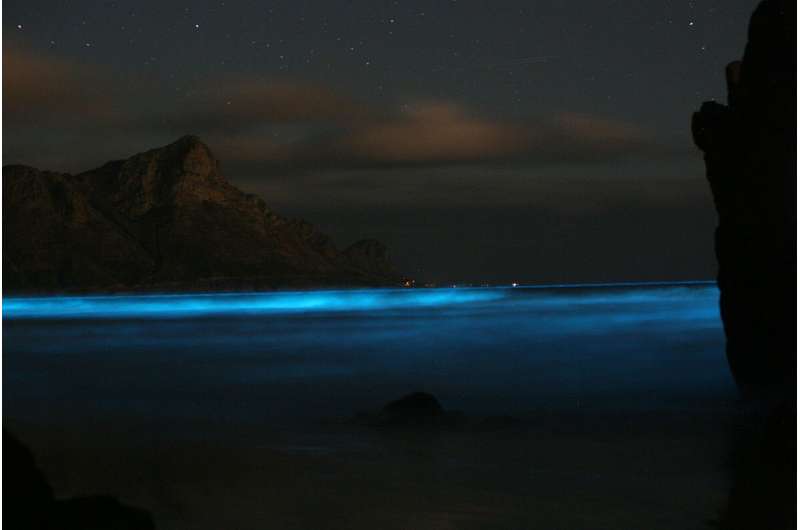This article has been reviewed according to Science X's editorial process and policies. Editors have highlighted the following attributes while ensuring the content's credibility:
fact-checked
trusted source
proofread
Studying impact of bioluminescent 'blue tears' on water quality around Pingtan Island

Pingtan Island is an attractive tourist destination off the east coast of mainland Asia south of the Min River estuary complex. One of its most well-known natural features that draws the crowds are the "blue tears." This natural phenomenon is a blue glow that emanates from various species of plankton that bloom in the waters around the island and is seen on the island's beaches and surrounding rocks.
Many tens of thousands of plankton cells present in every liter of seawater during the main blooming period April to July can produce a bioluminescent glow in turbulent waters. With such blooms there is always the concern that there might be a detrimental effect on the water quality, the other marine life and people and animals swimming in the water.
Work in the International Journal of Environment and Pollution has looked at the impact of blue tears on water quality for the first time. The team writes that the main bioluminescent species generating the blue tears is Noctiluca scintillans, rather than Vargula hilgendorfii.
However, contrary to earlier work that had suggested that the presence of N. scintillans might be detrimental to water quality, the team found that the water quality is good when this organism is present. The team also investigated the ebb and flow of the blue tears bloom and proposes a mechanism that might underlie this natural phenomenon. Their study of spatial and temporal variation in the planktonic community and seawater quality broadly show that the phenomenon of blue tears, which is becoming more widespread, is not, as had been assumed, associated with a drop in water quality.
More information: Shengchang Xiang et al, Identification of 'Blue tears' and its relationship with water quality of coastal waters in Pingtan Island, International Journal of Environment and Pollution (2023). DOI: 10.1504/IJEP.2021.10055447
Provided by Inderscience



















